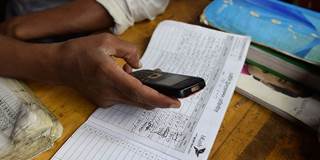Trillions of dollars will be needed to fund the world's human development goals, and domestic banking sectors in rich and poor countries will be part of the solution. But before emerging economies can play an active role in financing social and green projects, their banking sectors need new strategies for evaluating risk.
WASHINGTON, DC – To achieve the United Nations Sustainable Development Goals by 2030, trillions of dollars in state spending, investment, and aid will be needed annually. Although estimates vary widely, one UN report from 2014 suggests that total investment of as much as $7 trillion will be required for infrastructure improvements alone. But whatever the final tally, these sums are far beyond the means of governments, and leaders working to implement the 17 SDGs will expect their domestic banking sectors to provide much of the funding.
This is a reasonable expectation. In emerging markets, banks hold assets estimated at more than $50 trillion, meaning that they could impact dramatically how sustainable development is financed.
At the moment, however, many lenders don’t have the capacity to evaluate properly the financial, environmental, social, and governance-related risks associated with these types of projects. If the international community is to meet its SDG targets, sustainable finance practices will need to be strengthened.

WASHINGTON, DC – To achieve the United Nations Sustainable Development Goals by 2030, trillions of dollars in state spending, investment, and aid will be needed annually. Although estimates vary widely, one UN report from 2014 suggests that total investment of as much as $7 trillion will be required for infrastructure improvements alone. But whatever the final tally, these sums are far beyond the means of governments, and leaders working to implement the 17 SDGs will expect their domestic banking sectors to provide much of the funding.
This is a reasonable expectation. In emerging markets, banks hold assets estimated at more than $50 trillion, meaning that they could impact dramatically how sustainable development is financed.
At the moment, however, many lenders don’t have the capacity to evaluate properly the financial, environmental, social, and governance-related risks associated with these types of projects. If the international community is to meet its SDG targets, sustainable finance practices will need to be strengthened.